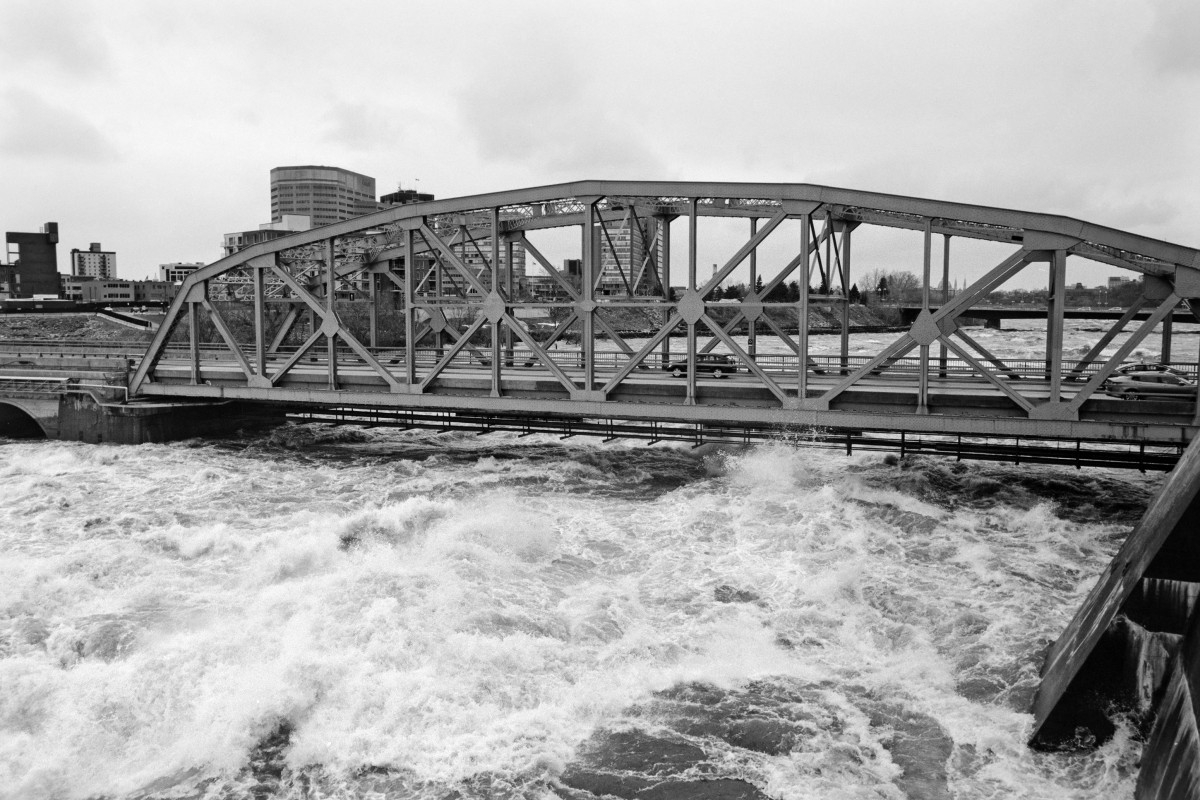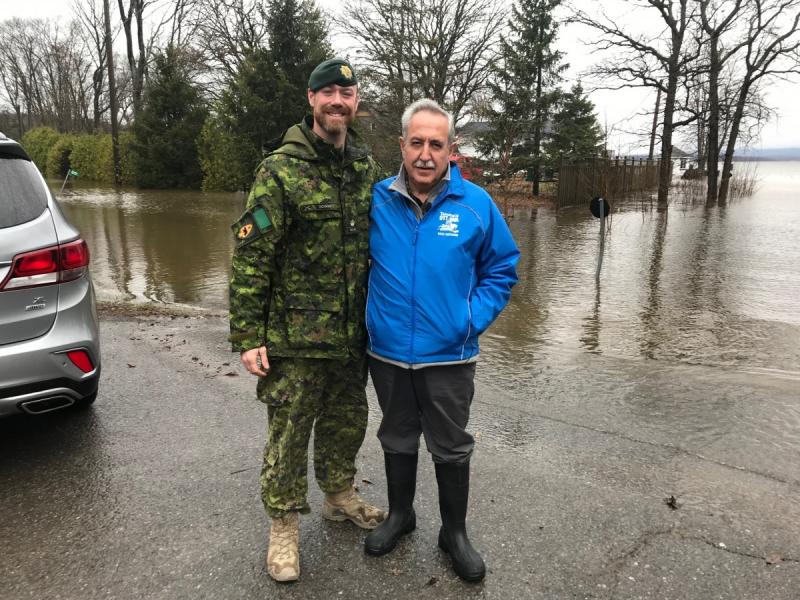
A river runs through it . . . your basement, that is
Photo credit: Shutterstock
Canada boasts some astonishing statistics regarding fresh water. We possess by far the highest per capita renewable water supply in the world, more that double that of second-place Brazil. Anyone who visits cottage country anywhere in central Canada knows it is impossible to toss a beach ball without it plunking into a river, lake, or stream. The municipality of Val-des-Monts alone contains 220 lakes. The St. Lawrence River's drainage basin covers some 1 million km2. Its greatest tributary, the Ottawa River, accounts for 140,000 km2. That’s a lot of water to manage between two provinces, two hydroelectric authorities, and multiple municipalities, so one has to wonder what impact this jurisdictional cluster has on what many residents now consider to be annual spring flooding.
Flooding was the big headline across the region in 2017 and again in 2019 when a state of emergency was in effect in the City of Ottawa between April 25 and June 12. Hardest hit were shoreline communities in West Carleton-March, Britannia, and Cumberland where 15,000 volunteers filled 1.5 million sandbags. Residents in about 120 homes in Britannia Village held their collective breath for weeks as waters nearly spilled over the city-built berm. Villagers began lobbying the city for a flood solution back in 2004 but following approval in 2006 things flat lined for more than 10 years before berm construction was finally underway and completed just in time for 2017. Sweat and worry in Britannia would have turned to fury had the berm failed this past spring. It came within a lap of a big wave of doing just that, prompting urgency and additional sandbags. The project divided the neighbourhood whose ratepayers are now indebted to a $195,000 levy over 10 years. Opponents of the berm questioned an expense for what was imagined to be a once-in-100-years event. That was prior to 2017 and 2019.
Neighbourhoods upriver in West Carleton-March were the hardest hit, prompting the city to issue a call for volunteers to concentrate their efforts there as of May 2nd. Concern was amplified by the Ottawa River Regulation Planning Board’s prediction that peak water levels were imminent, but the massive scale and complexity of the drainage basin made any well-intentioned forecasting model seem occult rather than rational. These models must factor in reservoirs as far away as the Abitibi-Timiskaming area. Snow accumulations that began in November and were repeatedly mixed with winter rains produced a layer cake of ice and crust and melt water that was exacerbated by spring downpours. One can debate the causes and effects, but one cannot argue with it being an unprecedented and costly [expletive deleted] mess even by Ottawa Valley standards.
Post mess, the Ontario government appointed a special advisor last July to review current flood management practices and formulate a revised strategy. Doug McNeil comes to the job with a boatload of deputy-ministerial experience in infrastructure and as the vice-president of hydraulics with the Manitoba Floodway Authority. His new role is perhaps a tacit acknowledgement that things along the Ottawa are not what they once were, whether or not that has anything to do with climate change. Minister Yakabuski introduced McNeil to the public with a pledge to “better prepare our province for flooding in the future.” McNeil met with city officials behind closed doors on September 5, 2019. Mayor Watson, Councillor Eli El-Chantiry, Cumberland Councillor Stephen Blais, Bay Councillor Theresa Kavanagh and emergency management head Pierre Poirier were invited along with representatives from other area municipalities and conservation authorities. El-Chantiry, whose ward was hardest hit, heartily appreciates McNeil’s gold medal credentials but wonders what can be done without federal and other absent officials at the table.

El-Chantiry has heard plenty of anger from residents of West Carleton-March, particularly about lack of communications and answers. That feeling was aggravated when El-Chantiry was not invited to Yakabuski’s announcement of the McNeil appointment, which was held on the waterfront in Constance Bay smack in the middle of El-Chantiry’s ward. At the first meeting with McNeil, El-Chantiry expressed deep concern as to “why are our federal colleagues were not invited, but he did not give us an explanation”. Furthermore, there were no representatives at the table from Ontario Power Generation or Hydro Québec. “McNeil is the right person for the job, but when you hire somebody with a budget of $60,000, how much consulting can you buy for that kind of money at that level of qualification?” McNeil is required to submit his report at the end of October and his recommendations must be within the province’s ability to implement them. The tight timeline and limited scope already suggests that the Ontario government’s response will focus on compensation and flood preparations rather than river management.
The West Carleton Disaster Relief Group mobilizes volunteers and handles logistics during the floods, everything from food to evacuation. They know better than anyone about the toll flooding has taken on the 508 residents affected in 2017 and the 1,100 affected in 2019. They too were not invited to the briefing held at City Hall on September 5, 2019. El-Chantiry cannot praise the efforts of the WCDRG enough, and echoes demands he heard over and over again to “just tell us if everything was functioning properly. The dams, the reservoirs, The Ottawa River Control Board, Hydro, just tell us there was no error if that was the case.” If that was indeed the case, then the discussion turns to compensation or property buy out, the two options available within the province’s “ability to implement”. But what property owner would sell at a reduced value or repair a home when flooding is the new norm and insurance is no longer offered? Furthermore, can error be entirely ruled out when the special advisor is talking to one side of the Ottawa River is not the other?
The idea of an Ottawa River watershed council has been proposed by an organization that regards the river in its natural entirety and not as a jurisdictional puzzle. Ottawa Riverkeeper believes that such a council could monitor dam operations and serve as a communications hub among the 200 municipal and hydro authorities along the waterway during flooding. Residents whose much-loved riverside homes have been repeatedly ruined would like nothing more than answers. Riverkeeper executive director Patrick Nadeau agrees “Communication is clearly not where it should be.” A recent, disturbing incident only underscores the need for an interprovincial river authority. Dead fish mysteriously started washing up on the shore of the Ottawa River last July and naturally there was great concern. It happened again and again spiking concern over the safety of the valley’s main source of drinking water. A communications snarl flummoxed attempts at collaboration. While everybody was working diligently to discover the cause, federal officials had to file an access to information request with the Québec government to acquire lab data. Turns out the epicentre was the Brookfield hydroelectric dam in Masson and the root cause was excessive debris from spring flooding.
Ottawa Riverkeeper recently onboarded Elizabeth Logue as its new riverkeeper, a role that most residents of the valley have probably never heard of but a role of increasing importance in the fluid state of climate change.











